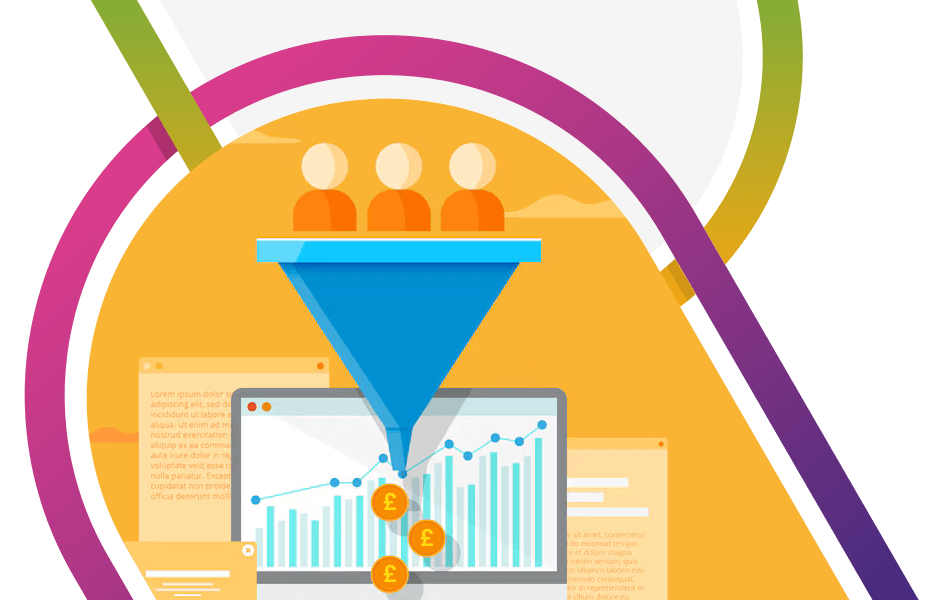
Free Digital Marketing Review
Elevate your online strategy with a personalised report and expert insights. Achieve your business goals faster!
You’ve likely invested time and resources into creating a website that looks fantastic. But here’s the thing: a flashy, creative website doesn’t necessarily mean more leads or sales. This is where Conversion Rate Optimisation (CRO) comes in.
What is Conversion Rate Optimisation?
Conversion Rate Optimisation, or CRO, is the process of enhancing your website to increase the percentage of visitors who take a desired action—whether that’s making a purchase, filling out a form, or picking up the phone. In essence, CRO is about making the most out of the traffic you already have, turning more visitors into customers without needing additional marketing spend.
The Impact of Small Changes
Imagine you currently have a conversion rate of 2%. This means that out of every 100 visitors to your site, only two are taking the action you want them to. By optimising your site and increasing your conversion rate to 4%, you’re doubling your website’s effectiveness—without needing a single extra visitor. The impact on your bottom line can be significant, all from subtle improvements to your existing website.
Ways to Improve Your Conversion Rate
Ready to start improving your website’s conversion rate? Here are some actionable steps you can take:
1. Audience
Before considering the actual pages, it is important to ensure that you are bringing in the right audience to the page. Even the most highly optimised websites will fail if the visitor is not looking for what is being offered. For example, if a user searches ‘men’s shoes’ and your website only sells women’s shoes, the visitor will quickly leave. This may seem obvious, but it is a common mistake, especially when using broad match keywords in Google Ads so check your search terms.
2. Write Compelling Headlines
Your headline is often the first thing visitors see. Make it clear, concise, and compelling. It should immediately communicate the value you offer and align with the keyword and ad copy that brought them to the page. Consider A/B testing different headlines to see which one resonates best with your audience.
3. Create Engaging Content
High-quality, relevant content can keep visitors on your site longer and guide them towards conversion. Use blog posts, videos, and infographics to engage and inform your audience.
4. Implement Multiple Types of Conversions
Not all visitors are ready to buy immediately. Offering various types of conversions can cater to different stages of the buyer journey. Consider incorporating:
- Enquiry Form: Provide a simple form for visitors to ask questions or request more information.
- Call Back Form: Provide an option for visitors to request a call back at their convenience.
- Get a Quote: Simplify the process for visitors to request pricing information.
- Zoom Booking Form: Allow visitors to schedule a virtual meeting directly from your site.
- Lead Magnets: Offer free resources like eBooks, checklists, reports, or price lists in exchange for contact details.
- Live Chat: Enable a live chat feature to answer questions in real time and guide visitors towards conversion. This can even be staffed by an AI Sales Agent.
- Phone Number: Display your phone number prominently to encourage immediate contact.
5. Optimise Your Call-to-Actions (CTAs)
CTAs are crucial for guiding visitors towards taking action. Ensure your CTAs are:
- Visible: Place them above the fold where they can be easily seen.
- Clear: Use direct language like “Buy Now,” “Sign Up,” or “Get Started.”
- Compelling: Highlight the benefits of taking action, such as “Join Now for Exclusive Discounts.”
- Informative: Explain what happens next after taking the action. For example, “Sign Up Now to Receive Your Free eBook Immediately” or “Enquire Online and Our Team Will Contact You Within 24 Hours.”
- Urgent: Create a sense of urgency with time-sensitive phrases like “Limited Time Offer” or “Only a Few Spots Left.”
6. Improve Page Load Speed
A slow website can frustrate visitors and increase bounce rates. Use our free website speed test to identify and fix issues that may be slowing down your site.
7. Simplify Your Forms
Lengthy forms can deter potential customers. Keep forms short and only ask for essential information. If you must capture a lot of information, consider using multi-step forms to make the process feel less overwhelming.
8. Use Social Proof
Testimonials, reviews, case studies, awards, and accreditations build trust with your audience. Showcase these prominently on your site to provide evidence that others have had positive experiences with your business.
9. Enhance Mobile Experience
More people are browsing and shopping on their mobile devices. Ensure your website is mobile-friendly by using responsive design and testing your site on various devices.
10. Create Dedicated Landing Pages
A landing pages is the first page visitors see after clicking on your ad. You can use existing pages from your website as landing pages, but for the best results, create separate landing pages that are hidden from the main website.
The benefit of having dedicated landing pages is that you can remove the navigation menu to minimise distractions and focus visitors on your objective. You can also create variations of the page for testing alternative content and layouts to align with your ads. This targeted approach increases the chances of conversion by providing a relevant experience for your visitors.
Use tools like Sales Igniter to create these landing pages and perform A/B testing to determine which versions are most effective at converting visitors.
11. Use Heatmaps and Analytics
Free tools like Microsoft Clarity and Google Analytics can provide insights into how visitors interact with your site. Use this data to identify areas for improvement and test different changes to see what works best.
12. Test, Test, Test
Continuous testing is key to successful CRO. Use A/B testing to compare different versions of your site and make data-driven decisions about what changes to implement.
Conclusion
Conversion Rate Optimisation is an effective strategy for any business looking to maximise the effectiveness of their website. By implementing the recommendations above, you can start to see improvements in your conversion rates, leading to more leads and sales without the need for additional traffic or marketing spend.
Need Help Improving Your Conversion Rate?
At Link Digital, we create websites that not only look great but also perform exceptionally well. Our sites regularly achieve conversion rates above the industry average, often greater than 10%. We combine our expertise in design, user experience, and CRO to deliver results that drive business growth. Book a free Zoom meeting to find out more.

Need help with your website and marketing?
Book a FREE growth strategy session with our experts
Our award-winning team will review your website and marketing goals to provide you with crucial insight and advice.

4.9 STAR
Google reviews
With 10+ years of experience, Link Digital has helped hundreds of businesses to succeed online. We can help yours too!

